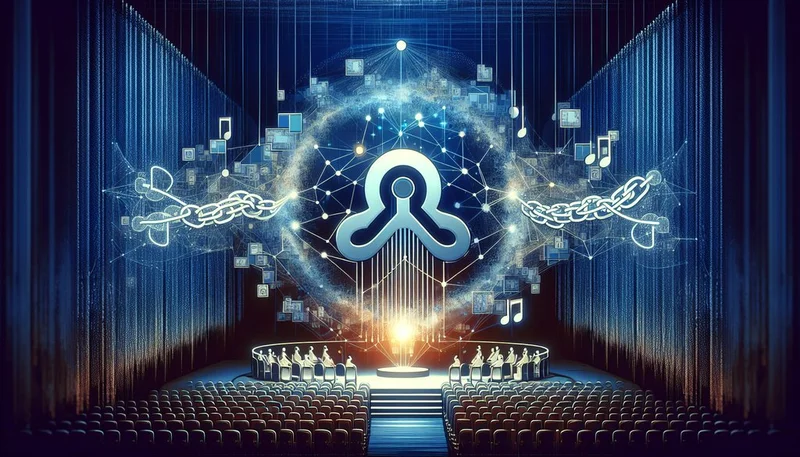XLM Insight | Stellar Lumens News, Price Trends & Guides
XLM Insight | Stellar Lumens News, Price Trends & Guides
Every so often, a signal cuts through the noise. It’s a moment that feels less like an incremental step and more like a tectonic shift. We saw it with the first web browser, with the launch of the iPhone, and I believe we’re seeing it again right now. When I first saw the numbers for ChainOpera AI—a 512% surge in 24 hours, a trading volume that briefly eclipsed giants like Solana and BNB—I honestly just sat back in my chair, speechless. But it wasn't the numbers that truly captivated me. It was the story behind the numbers.
This isn't another tale of speculative frenzy. This is the blueprint for a new kind of future, one where the foundational tools of artificial intelligence are no longer locked away in the data centers of a few trillion-dollar companies. What we're witnessing with ChainOpera AI isn't just a successful token launch; it's one of the first explosive proofs-of-concept for a community-owned, decentralized AI ecosystem. And if you think this is just about crypto, you're missing the revolution that's happening right under our feet.
For years, the promise of "Web3 AI" has been just that—a promise. We’ve seen countless projects that were heavy on storytelling and light on actual, usable products. They sold us maps to a future they hadn't built yet. ChainOpera is different. It’s the team that actually laid the railroad tracks. They built a full-stack AI infrastructure—in simpler terms, they created a complete, working universe for AI agents to be built, to interact, and to be utilized by anyone. You can go to their site right now and use it. This is the kind of breakthrough that reminds me why I got into this field in the first place.
The core idea is an AI Agent Social Network. Imagine a digital city where specialized AI programs, created by a global community of developers, can collaborate to solve problems. One agent might be an expert in financial data, another in climate modeling, and a third in creative writing. ChainOpera provides the town square, the language, and the economy for them to work together. Is this the key to unlocking a kind of collective intelligence we've only dreamed of? Could we see emergent solutions to complex problems arise from this digital symphony?
What makes ChainOpera’s success so profound is that it wasn’t an accident. It was a masterclass in strategic execution, a perfect fusion of technology, timing, and community building. This wasn't a spark in a vacuum; it was a carefully constructed lightning rod placed in the middle of a gathering storm, revealing The Secret Behind ChainOpera AI’s Explosive Success: Strategic Cycle Timing and a Fully Diluted Valuation Beyond $4 Billion.

First, they chose their foundation wisely: the BNB Smart Chain. As the entire Binance ecosystem was experiencing unprecedented growth, with on-chain activity hitting fever pitch, ChainOpera didn’t just launch into the current; they had been building their ship in that very harbor for months. They focused on a simple, yet brilliant, product strategy: they created AI tools that were genuinely useful, attracting 3 million users who paid for services with BNB. They built a real customer base before they ever had a token. This created a funnel, converting actual product users into token holders, solving one of the biggest disconnects in the entire Web3 space. It’s a model so elegant, so logical, that it seems obvious in retrospect. But how many have actually pulled it off?
Then came the launch, a perfectly timed convergence of market forces. It coincided with a massive surge in perpetual futures trading—the very instrument at the core of their listing strategy—which meant from day one there was incredible liquidity and market depth. This is like opening a surf shop on the very day the biggest wave in a decade is set to hit the coast. The simultaneous listing with the stablecoin project $XPL was another stroke of genius, creating a traffic resonance effect where the excitement for one project amplified the other, and the combined energy of it all was just staggering—it created a feedback loop that pulled in billions in trading volume and put the project on par with giants like Bitcoin and Ethereum.
Of course, with any rapid ascent comes the inevitable question of gravity. Skeptics will point to the volatility and warn of a reversal once the "hype" dies down. And they're not wrong to be cautious. But to view this solely through the lens of short-term price action is to miss the historical parallel. It's like looking at the chaotic, dial-up cacophony of the early internet in 1995 and dismissing it as a passing fad. True paradigm shifts are never smooth; they are messy, volatile, and terrifyingly exciting. The volatility isn't a sign of failure; it's a sign that something real is being born.
With this new power, however, comes immense responsibility. As we build these decentralized networks of intelligence, we must ensure they remain open, accessible, and aligned with human values. The beauty of a model like ChainOpera is that ownership is distributed, but that also means the stewardship is distributed. We, the community, are the ones who must guide it. What kind of future will we choose to build with these tools?
Let’s be clear. The explosive success of ChainOpera AI isn't the real story. It’s the headline. The real story is the underlying shift it represents. For the first time, we're seeing a viable, scalable model for an AI infrastructure that isn't owned by a corporation, but by its users. This is more than just a technological achievement; it's a philosophical one. It suggests a future where the power of artificial intelligence—arguably the most transformative technology in human history—can be wielded by the many, not the few. This is the blueprint, and it's just been handed to the world. Now, the real work begins.